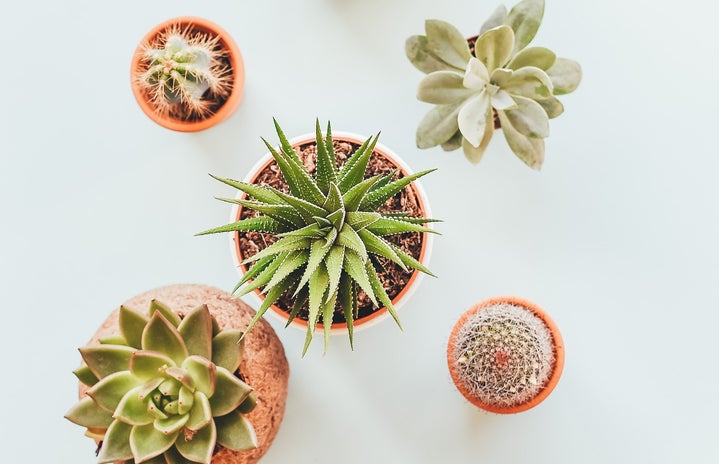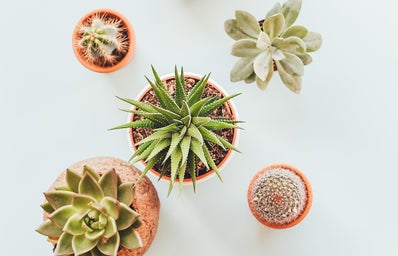Each semester, I’ve watched students carry potted plants through Turlington, into lecture halls, and through the Reitz Union.
During my first few weeks here, I assumed these students were all plant science majors, or part of a gardening club and showing off their passion.
Soon though, I learned they were students in a one-credit class: Plants, Gardening and You.
According to the syllabus of one ORH1030 class, Plants, Gardening and You is a non-majors horticulture course in which “emphasis is placed on the art and science of growing and using plants to enhance and improve the human environment.”
I was intrigued by this course, but not enough to take it myself — my luck with plants seems to be perpetually unfortunate.
However, my roommates (one who spent our freshman year keeping orchids alive on our dorm windowsill, and one who was interested in growing her own food) decided to take it last semester, and I got a peek at the way the class works.
About Plants, Gardening and You
The first week, students are given a baby tomato plant. Part of their grade in the class depends on this plant growing a red tomato (no pressure!).
In the following weeks, the professor brings different plants to class, and students get to take home one (or two, or three) to keep for themselves.
At some point throughout the semester, they get a bonus plant to take home, according to their last name.
The plants add up over the weeks. Students take them home to their balconies or their dorm rooms, lining them up in the sun and adding fertilizer.
If they want extra credit, they can create more plants from their existing plants by taking cuttings and placing them in water until they grow roots. More free plants!
According to my roommates, their professor’s goal for the semester is to inspire students to become “plant aware” — conscious of the greenery around us and its purpose.
They should notice how the type of grass we walk on was chosen for its sturdiness, and the ferns on 13th Street for their viability.
Taking care of plants
I watched my roommates and friends in the class incorporate plants into their lives outside the class.
They carved out time to dedicate to their flowers and spent their Saturdays at the botanical gardens.
When my roommates took The Plant Class, our balcony was filled with coleuses, marigolds, pansies and more coleuses.
My roommate Isabella Zucaro took the most responsibility for the plants and enjoyed caring and spending time with them.
She said, “I would try to go out every morning. I even bought special planters and sticks to hold up my tomato plant.”
But, when December came and she had to leave Gainesville, the garden’s survival went up in the air.
“My garden shrunk by half. My coleus and tomatoes are alive but looking weak,” she said.
Now, she said, she doesn’t make the outdoor garden as much of a priority as she did last semester, but she still maintains her passion for plants, continuing to take care of the ones she keeps in her room: a wandering jew, from the class, a couple orchids, and four or five succulents.
The downsizing of our (her) garden made me wonder: what happens to everyone else’s plants once the class finishes, once students have submitted proof their tomato plants flowered and that their clippings sprouted roots? Were they forgotten on a porch no one ventured out to, or did they grow endlessly under these students newly educated on plants?
Where are they now?
Andrea Relova, a sophomore computer science major, shared how her plants lived before and after the class.
Like my roommates, she also took it in Fall 2019, and kept the plants on her patio.
In an effort to keep them alive, she took them home with her over winter break, trekking them to Jacksonville for the month and bringing them back to Gainesville for the spring.
“Very few of them survived,” she said. “A lot of annual flowers died within a couple of months while the class was still going on, but they were supposed to die in winter anyway. I still have the coleus and the succulent.”
Despite her attempts to place them in the sun and water them regularly, they are looking “sadder than before…slowly wilting.” Still, Andrea expressed how grateful she was for the class overall.
“I’m really into having houseplants now!” she said. “I’ve bought several others since the class and I’m really enjoying having them in my living space.”
Noah Molko, a second-year material science major, shared that over the semester, his balcony filled with pentas, pansies, marigold, chrysanthemum, begonias, zinnias, and more.
He kept most of them but gave some away to friends.
“Most of them survived, only my zinnias died,” he said.
After taking the plant class in Fall 2019, he also took his plants home after winter break.
Unlike Andrea, however, he didn’t bring them back to Gainesville.
Despite his success in the fall, it was more important to him to keep them alive in the long term than to have them with him.
Today, he says most of his plants are still alive because his mom has them.
At the end of the semester, some students decide to share their plants with others.
On Reddit, user AshleyJoy03 revealed that she ended her class with three tomato plants and various other kinds.
“Out of the tomato plants, I gave one of my six-foot-tall plants to my RA as a thank you gift,” she wrote.
She added that her mom has the other two tomato plants, and the family now has a beagle puppy who loves to pick the tomatoes and run around with them.
While it seems most plants were relocated after taking the class, Sophia Ahmed, a senior who took Plants Gardening and You in Summer 2018, has decidedly held on to most of hers.
“I forget to water a lot,” she admitted, adding: “I mean, they’re alive.”
She also took advantage of the opportunity to propagate the plants, choosing to create more coleuses with the color that she liked.
Even though she claims she’s forgetful, the picture she sent me showed them flourishing on a windowsill, in addition to plants acquired outside the class.
Sophomore Arturo Sosa’s plants were not as lucky as Sophia’s.
“I left them here for the break,” he said. “So, when I came back, they were all dead.”
Still, he found comfort in the plants during the months they were alive.
“I realized the impact that having a plant has in your life — it gives you the chance to take care of another living thing and gives you something to do for you to relieve stress.”
Wherever, and however the plants physically end up after Plants, Gardening and You doesn’t seem to be the point after all.
Whether their plants are thriving in Jacksonville or wilting in Miami or multiplying inside a Social28 apartment, the students of Plants, Gardening and You leave the class with something less tangible than all the free plants.
Possibly more important: an understanding of the way greenery is entwined in our daily lives, whether by choice (electing to water a coleus every day) or sheer circumstance (the oak tree outside your apartment building, the ficuses in the hotel lobby).
Even if they didn’t keep their tomato plants alive, they seem to have succeeded in being “plant aware.”


